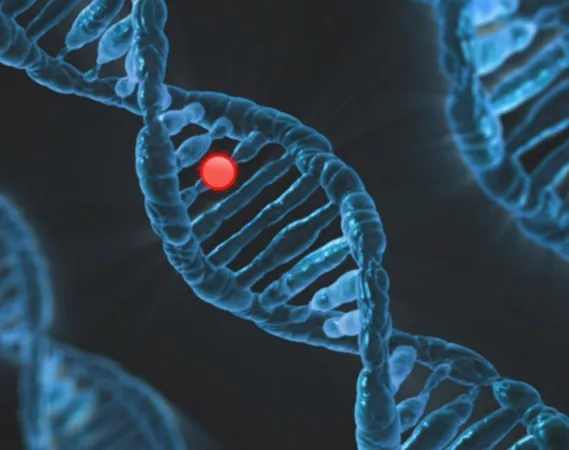
Shy Mice Outsmart Bold Ones: Surprising Insights into Animal Problem-Solving!
2025-04-03
Author: Nur
Study Overview
A groundbreaking study from the Max Planck Institute for Evolutionary Biology has unveiled a fascinating twist in the understanding of animal behavior, particularly in how personality traits influence problem-solving abilities. Featured in the latest edition of Oikos, this research spotlights the wild house mouse—an unsuspecting hero that challenges longstanding beliefs in animal cognition.
Research Methodology
Conducted by a brilliant team led by Alexandros Vezyrakis, along with Anja Guenther and Valeria Mazza, the study involved testing over 100 wild house mice in both semi-natural enclosures, designed to mimic their native habitats, and controlled laboratory environments. The findings were nothing short of astounding: shyer mice exhibited more persistence than their bolder counterparts, repeatedly returning to problem-solving tasks and thereby significantly improving their chances of success!
Key Findings
This revelation stands in stark contrast to traditional assumptions in the field of animal behavior, which often suggest that bold and explorative individuals are the ones who excel in overcoming obstacles. Instead, this study underscores a powerful lesson: shyness can equate to a methodical approach, with these timid mice demonstrating that perseverance often trumps bravado. "Innovation, it turns out, may be less about who's bold and more about who shows up often enough to get lucky," notes lead author Vezyrakis. "Persistence, not just personality, plays a central role in problem-solving."
Impact of Environment
An equally important aspect of the research is how the testing environment can drastically influence animal behavior and outcomes. In quiet lab conditions, a notable 60% of the mice were able to solve at least one problem presented to them. However, when placed in dynamic, semi-natural settings that more closely resembled their wild environment, this number plummeted to roughly 21%. This disparity suggests that many lab-based experiments might overlook critical factors that affect animal responses to real-world challenges.
Research Implications
Co-author Guenther elaborates on this point: "Real-life conditions are messy. If we only observe behavior in highly controlled lab settings, we risk misinterpreting how animals truly engage with challenges in their natural habitats." Furthermore, the inconsistent behaviors exhibited by the mice across different environments reveal two crucial components of innovation: ability (the potential to solve problems) and propensity (the likelihood of attempting to solve them). This study not only redefines our understanding of animal intelligence but also raises important questions about the methodologies used in behavioral research.
Conclusion and Future Directions
Could it be that the next big discovery in animal cognition lies with creatures traditionally deemed shy or less adventurous? As researchers delve deeper into the personalities of various species, they may uncover game-changing insights into how innovation and persistence interact in the wild. So, the next time you encounter a timid little mouse, remember—it might just be a silent genius in disguise!


 Brasil (PT)
Brasil (PT)
 Canada (EN)
Canada (EN)
 Chile (ES)
Chile (ES)
 Česko (CS)
Česko (CS)
 대한민국 (KO)
대한민국 (KO)
 España (ES)
España (ES)
 France (FR)
France (FR)
 Hong Kong (EN)
Hong Kong (EN)
 Italia (IT)
Italia (IT)
 日本 (JA)
日本 (JA)
 Magyarország (HU)
Magyarország (HU)
 Norge (NO)
Norge (NO)
 Polska (PL)
Polska (PL)
 Schweiz (DE)
Schweiz (DE)
 Singapore (EN)
Singapore (EN)
 Sverige (SV)
Sverige (SV)
 Suomi (FI)
Suomi (FI)
 Türkiye (TR)
Türkiye (TR)
 الإمارات العربية المتحدة (AR)
الإمارات العربية المتحدة (AR)